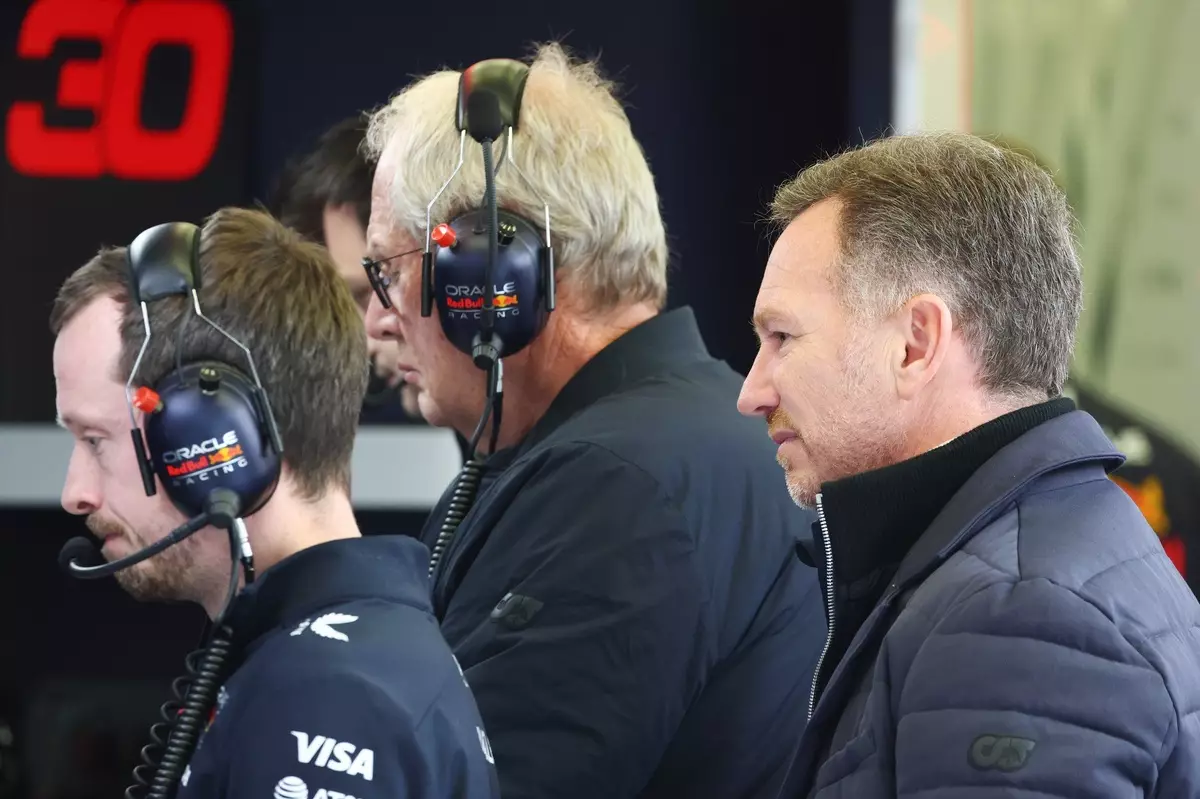Christian Horner, the team principal of Red Bull Racing, recently articulated a sentiment that resonates deeply within the oscillating dynamics of Formula 1: the discrepancy between wind tunnel data and actual track performance. His metaphor of “two different watches” captures the essence of Red Bull’s current struggle. Despite having secured victories in the past, including a recent win for Max Verstappen at the Japanese Grand Prix, the team’s journey into the 2025 season has been riddled with challenges. This ongoing conflict marries technical ambition with the stark realities of mismatched engineering outcomes, necessitating urgent internal reflections and strategy adjustments.
For Red Bull, the situation is more than just a performance slump; it’s a critical evaluation of their very essence as a leading team in F1. The RB21, while a product of impressive engineering, is afflicted by issues that seem to echo the difficulties faced last season. It raises a fundamental question: How does a championship-winning team find itself grappling with a lack of cohesion between simulated data and real-world experiences? The challenge highlights not only the complexities of modern F1 technologies but also the intricate tapestry of variables that determine success on the circuit.
Crisis Talks and Strategic Adjustments
After a disappointing showing in Bahrain, where the car’s shortcomings became painfully evident, Horner convened a high-stakes meeting to identify solutions. This “crisis” dialogue was not about diluting the team’s longstanding methods, but rather about revitalizing their strategic approach. Red Bull’s reputation for producing cutting-edge race cars has always hinged on their ability to interpret and react to data; however, the apparent divergence between computational predictions and track reality poses a formidable challenge.
Horner’s acknowledgment of the issues suggests an imperative for the team: to refine their tools and methodologies for data interpretation. He emphasizes the need to understand why the simulations do not align with the observed results on the track. Such a scenario can be disheartening, particularly when technological advancements are ostensibly designed to minimize these gaps. His declaration reveals a keen awareness that continued reliance on flawed tools can severely handicap performance improvements.
The Race Against Time: Gaining Insights from Data
As the season progresses, data collection from successive races becomes paramount. For Red Bull, the races in Australia, China, Japan, and Bahrain have yielded crucial insights that could potentially drive corrective action. Horner’s observation about the need for track data to enhance solutions is a pragmatic stance that underscores the importance of real-world experience over theoretical predictions.
This focus on track data reflects a broader trend within F1—one where practical performance often trumps simulated efficiency. In a sport where every millisecond counts, the capacity to swiftly adapt and implement effective changes is critical. However, there lies a palpable tension; in a year where regulatory changes are minimal, teams like Mercedes and Haas have made significant gains. Meanwhile, Red Bull’s struggle to recalibrate from previous season pitfalls starkly illustrates the steep learning curve still ahead.
The Aero Challenge: Mid-Corner Dynamics
When delving into the intricacies of the car’s performance issues, it becomes increasingly clear that the entry phase into mid-corner dynamics needs significant attention. The balance and grip at this critical stage have proven elusive, and Horner makes no effort to downplay the aerodynamic challenges that persist. These issues are compounded by the end of a regulation cycle, where incremental gains are a hard-fought battle.
The engineering symbiosis necessary to evolve a car’s aerodynamic profile is delicate. Achieving the right levels of grip and confidence for Verstappen is pivotal. Each lap encapsulates this urgency, where even small enhancements can mean the difference between a podium finish and mid-pack obscurity. The season dress rehearsal is now, and Red Bull must leverage all available data to make informed improvements.
The Road Ahead: Wind Tunnel Prospects and Future Design
Looking ahead, Red Bull has hopes pinned on an upcoming wind tunnel facility, set to debut in 2027. This advance is crucial; however, the current regulatory tools will remain in operation for the next 18 months. The balance between immediate solutions and long-term strategies is delicate but necessary. As Horner indicated, they may be on the right track, but the clock is ticking.
The duality of the situation presents unique challenges for a team of Red Bull’s stature. It is a test of innovation, adaptability, and resilience. The path towards reclaiming their competitive edge will not be easy, but the very essence of Formula 1—a relentless drive to improve and excel—will undoubtedly inspire Red Bull on their journey. With a strong technical team fueled by passion, there’s potential for renewal, growth, and, ultimately, a return to the forefront of Formula 1 racing. A new era may be on the horizon, but only time will reveal if Red Bull can synchronize their watches once again.

